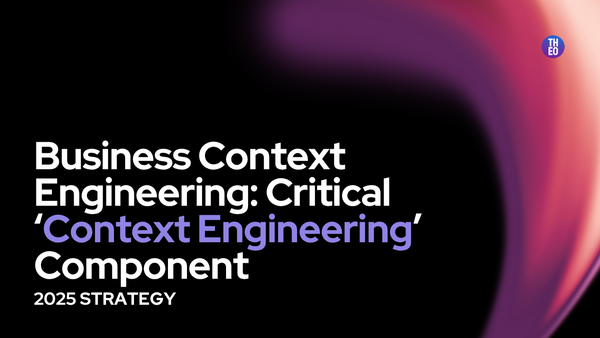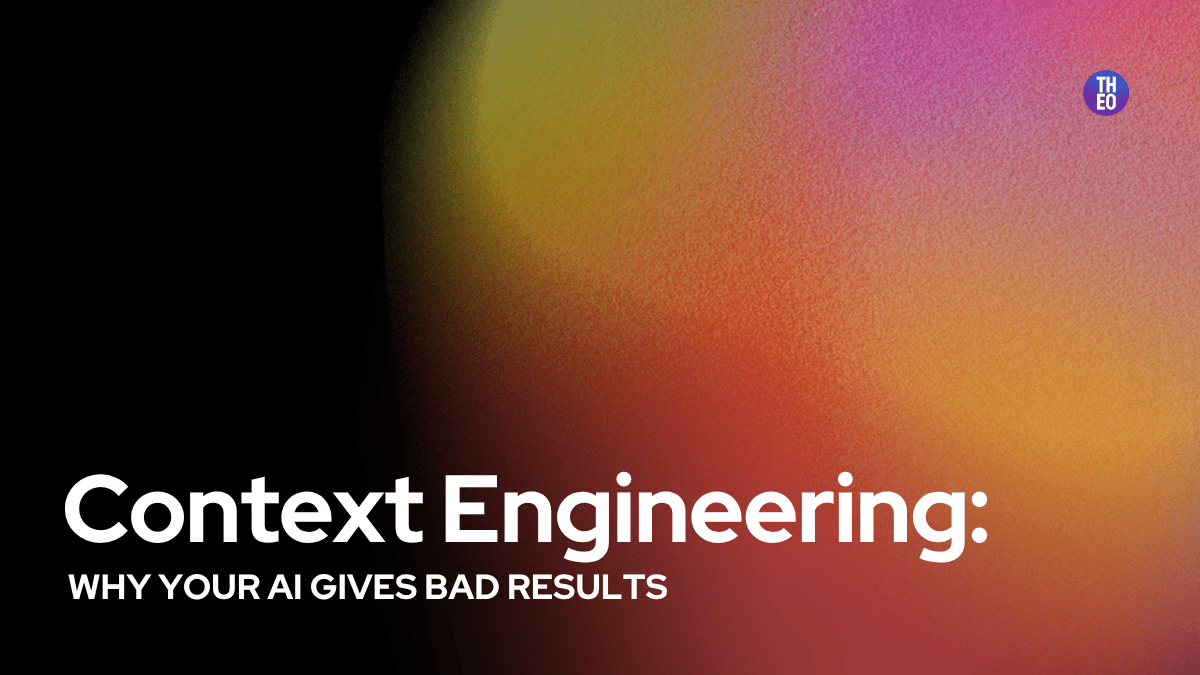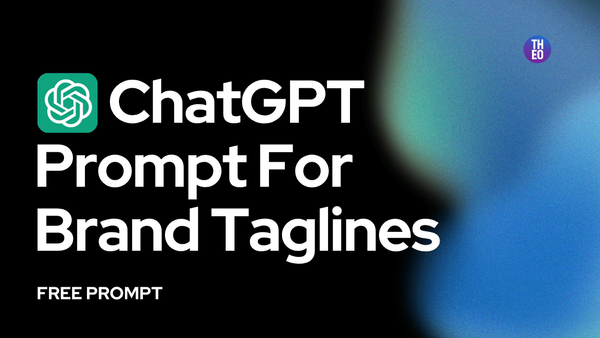How to Create a Custom GPT That Actually Knows Your Business (Not Just Your Documents)
Stop generic AI responses. Create Custom GPTs that understand your business context in 30 minutes. Get strategic marketing advice and save hours weekly.

I've seen hundreds of small business Custom GPTs, and 90% of them have the same problem. They're built like this:
Typical Approach, and why 90% of Custom GPTs fail:
- Upload pitch deck ✅
- Upload website copy ✅
- Upload a few product sheets ✅
- Hope ChatGPT "gets it" ❌
Result: Generic responses that miss your unique positioning, confuse your different customer segments, and sound like they were written by someone who skimmed your website for 30 seconds.
The issue isn't the volume of documents. It's that scattered, unorganized information creates confused AI responses.
Real Example: Laura, founder of a 15-person healthcare SaaS company, uploaded 47 documents to their Custom GPT. When she asked for email marketing ideas, it suggested generic "productivity tips" instead of addressing their specific customer pain points around HIPAA compliance. Why? Because their customer research was buried across multiple docs with no clear connection to their positioning.
Then she tried the business context organization method I'm about to show you.
The Business Context Organization Method (30 Minutes, No IT Required)
Here's what changed everything for Laura and 200+ other small business marketers
Important: This isn't a complex technical setup. No IT resources needed. Most people complete this in under 30 minutes.
👉🏻 Step 1: Organize Your Context Foundation (10 minutes)
Instead of random document uploads, organize your information into these core areas:
Essential Business Context Areas:
- Company Positioning (What makes you different + why it matters)
- Customer Segments (Who buys + their specific pain points)
- Product Portfolio (What you sell + how it solves problems)
- Competitive Landscape (Who you're up against + your advantages)
- Brand Voice & Messaging (How you communicate + what resonates)
Before/After Example:
Before: "Here are our marketing materials, figure out our customer segments."
After: "Our primary customers are 50-250 employee healthcare practices struggling with HIPAA compliance documentation taking 12+ hours weekly. Our advantage is automated documentation that reduces audit prep from 12 hours to 45 minutes."
Laura's Result: "The difference was immediate. Instead of generic healthcare tips, I got specific campaigns targeting medical practice administrators worried about compliance audits."
👉🏻 Step 2: Build Your GPT with Strategic Instructions (10 minutes)
Here's the step-by-step process:
2.1: Start with Your GPT Creation
- Go to ChatGPT → Explore → Create a GPT
- Name it: "[Your Company] Marketing Strategist"
- Description: "AI assistant that understands [Company]'s unique positioning, customers, and marketing goals"
2.2: Write Business-Intelligent Instructions
Don't just say "help with marketing." Give specific context about how to think about your business:
Template Instructions:
KEY BUSINESS CONTEXT:
- Our unique positioning: [specific differentiation]
- Our primary customers: [detailed customer description + pain points]
- Our main competitors: [who + how we're different]
- Our brand voice: [personality + communication style]
When providing marketing advice:
1. Always reference our specific customer pain points
2. Leverage our unique competitive advantages
3. Maintain our brand voice and messaging 4. Connect tactics to our business goals
Laura's Implementation: "You're the marketing strategist for HealthComply, a HIPAA compliance automation platform for healthcare practices. Our customers are overwhelmed administrators who lack compliance staff. Our advantage is reducing audit prep from 12 hours to 45 minutes. Focus on educational content addressing administrator pain points around time constraints and audit anxiety."
👉🏻 Step 3: Test and Refine with Business-Specific Scenarios
Most people stop after setup. That's a mistake. Test your Custom GPT with real business scenarios:
Marketing Scenario Testing:
Test 1: Campaign Development "Create a LinkedIn campaign targeting our primary customer segment."
🟩 Good Response Signs:
- References specific customer pain points
- Uses your competitive advantages
- Maintains your brand voice
- Suggests metrics aligned with your business goals
🟥 Bad Response Signs:
- Generic "increase brand awareness" advice
- Could apply to any business in your industry
- Misses your unique positioning
Test 2: Competitive Response "Our main competitor just launched a new feature. How should we respond?"
🟩 Good Response Signs:
- Acknowledges your specific competitive advantages
- Suggests positioning that reinforces your differentiation
- Recommends customer communication aligned with your value prop
Real Results from Testing:
Marcus, 23-employee B2B SaaS: "I tested our GPT with a competitor analysis request. Instead of generic feature comparisons, it immediately identified how to position our integration capabilities as the key differentiator for our specific customer segment—mid-market companies struggling with data silos. That insight led to our best-performing campaign ever."
Sarah, solo marketing consultant: "My client in manufacturing asked for trade show strategy. The GPT knew to focus on technical decision-makers worried about equipment downtime, not generic trade show tactics. My client was amazed at how targeted the recommendations were."
The Business Impact: Before vs. After
Here's what happens when you implement business context organization instead of document dumping:
| Marketing Task | Document Dump Approach | Business Context Approach |
|---|---|---|
| Social Media Strategy | Generic industry tips, broad audience targeting | Customer segment-specific content themes, pain point-focused messaging |
| Email Campaign Creation | Template-based generic sequences | Customer journey-aligned sequences with specific value propositions |
| Competitive Analysis | Surface-level feature comparisons | Strategic positioning analysis with differentiation focus |
| Content Marketing | Broad industry topics | Customer pain point-focused topics with unique angle integration |
Measurable Results from Similar-Sized Companies:
Laura's Healthcare SaaS (15 employees):
- Email open rates increased 34% with customer-specific messaging
- Generated 3 qualified leads in first week from LinkedIn content that addressed specific compliance pain points
- Reduced content creation time from 3 hours to 45 minutes per piece
Marcus's B2B SaaS (23 employees):
- Competitive response campaign drove 28% increase in demo requests
- Custom GPT identified positioning angle that became their primary sales message
- Cut campaign planning time from 2 days to 4 hours
Jennifer's Practice Management Software (45 employees):
- Segment-specific messaging improved conversion rates by 41%
- Generated industry-specific content that attracted 12 new prospects in one month
- Eliminated confusion between different customer segments in all marketing materials

Common Mistakes to Avoid
Mistake #1: Information Overload "I uploaded everything thinking more was better. The GPT got confused and started mixing messaging for different customer segments." - Tom, 19-employee consulting firm
Solution: Focus on quality context over quantity of files. Start with one clear customer segment.
Mistake #2: Internal Jargon "My GPT was using our internal product names that customers don't understand. It sounded robotic." - Rachel, solo marketing consultant
Solution: Your GPT should understand customer language, not just your internal terminology.
Mistake #3: Static Context "I set it up once and forgot about it. Six months later, our messaging had evolved but the GPT was still giving old advice." - David, 31-employee agency
Solution: Update your business context quarterly or when positioning changes.
Mistake #4: Generic Testing "I asked generic questions and got decent answers, so I thought it was working. Then I tried real campaign planning and realized it was still too broad." - Lisa, 8-employee e-commerce company
Solution: Test with specific business scenarios, not general "help me with marketing" requests.
Your 30-Minute Implementation Plan
This Week:
- Document your positioning (10 min): What makes you different and why it matters?
- Define your customer segment (10 min): Who specifically do you serve and what are their pain points?
- Create your GPT (10 min): Use the template above with your specific context
Next Week:
- Test with 3 real marketing scenarios
- Refine based on response quality
- Add competitive differentiation details
The Bottom Line
The difference between a document dump and business context organization is the difference between an AI that knows your files exist and an AI that understands your business strategy.
Most marketeers will keep uploading random documents and wondering why their Custom GPT doesn't "get" their business.
But now you know better.
Your Custom GPT should be a strategic marketing partner that understands your positioning, knows your customers, and can think strategically about your business challenges. Not just a file reader.
Ready to see the difference? Pick one marketing challenge you're facing this week and test it with a properly contextualized Custom GPT. The response quality will surprise yo
The 200+ small marketing teams already using this approach aren't special. They just stopped treating AI like a search engine and started treating it like a strategic partner who needs to understand their business.
Your turn.
💡 Wait, what if this 30-minute process was just the tip of the iceberg? What if you could skip all manual work and get an AI that automatically captures your complete business DNA, then creates system instructions so sophisticated your assistant becomes 10x more strategically intelligent - with just a 2-minute setup?
See how → or get weekly AI marketing tips that actually work for small businesses.





